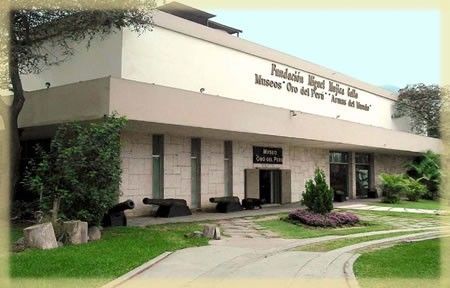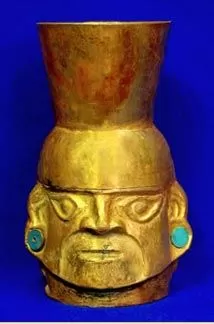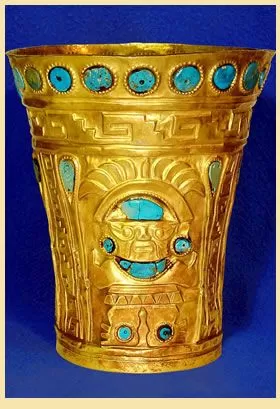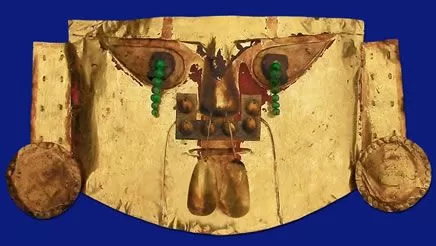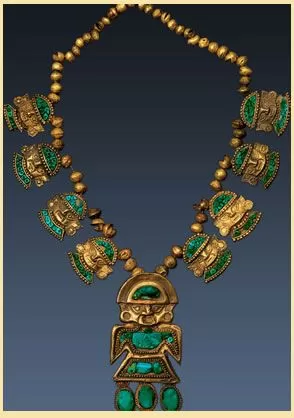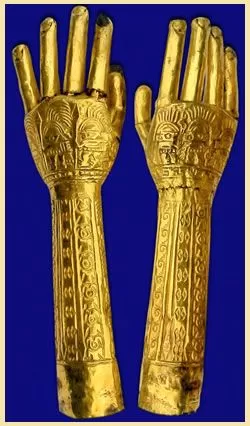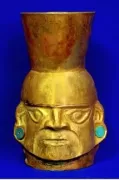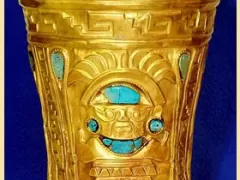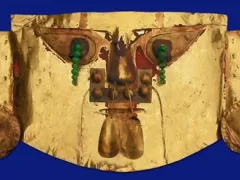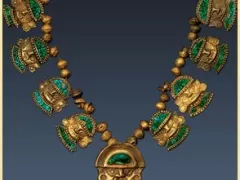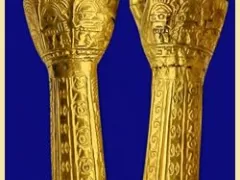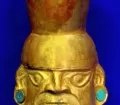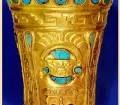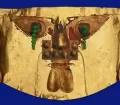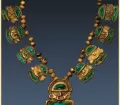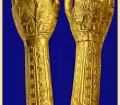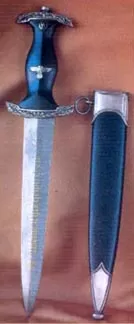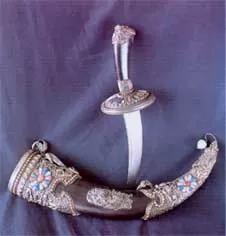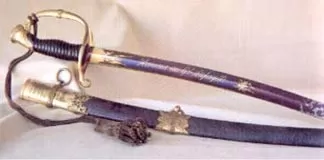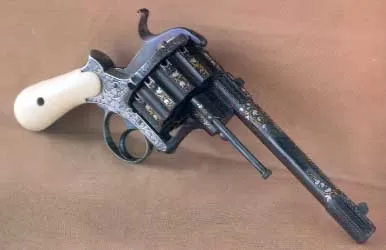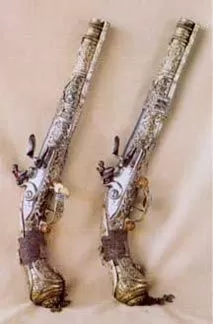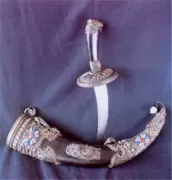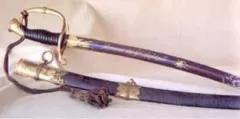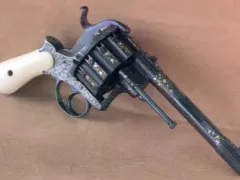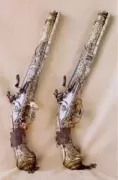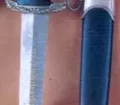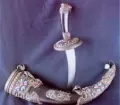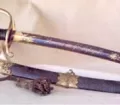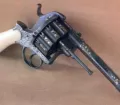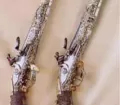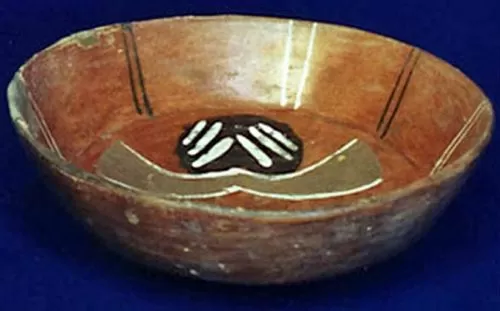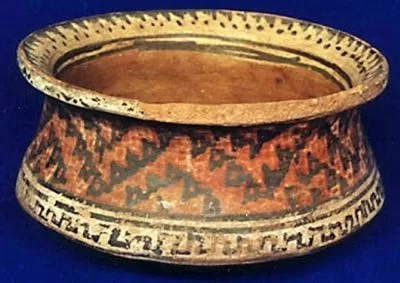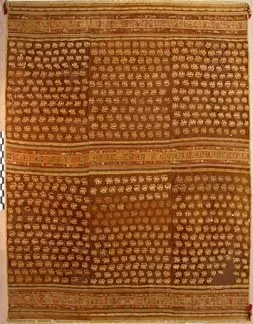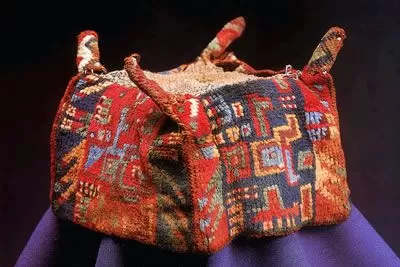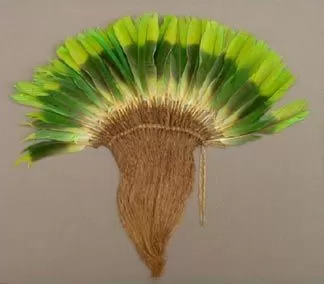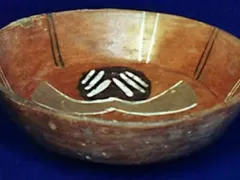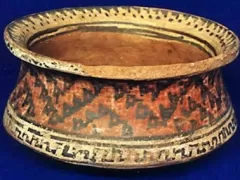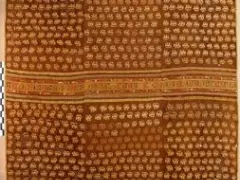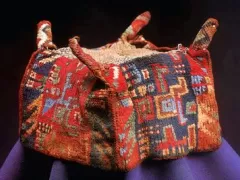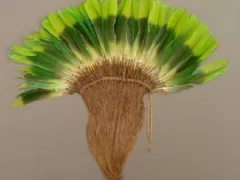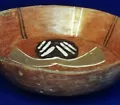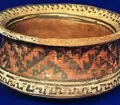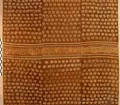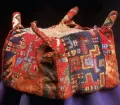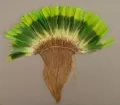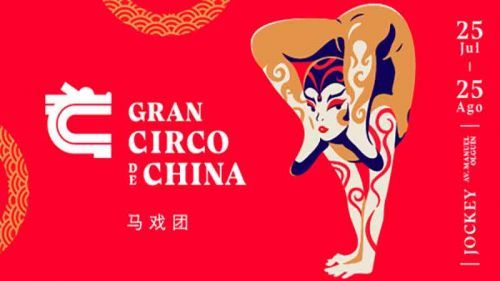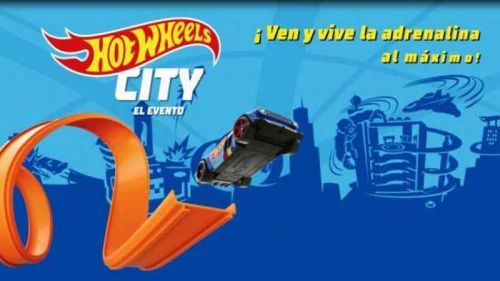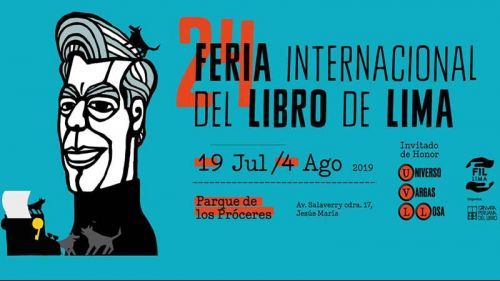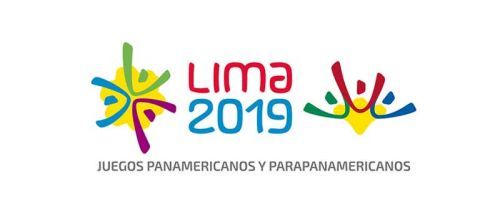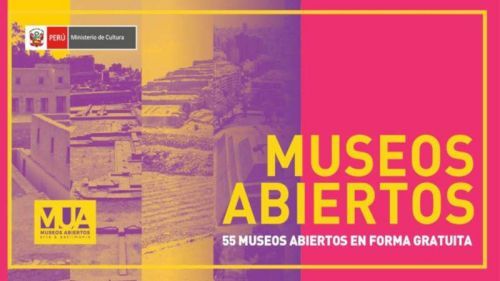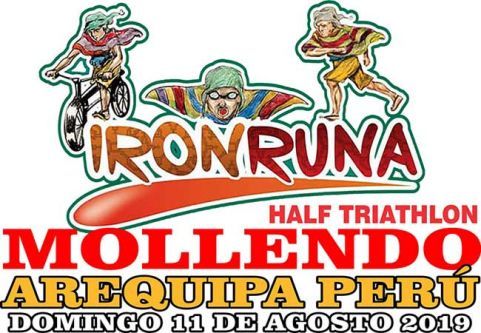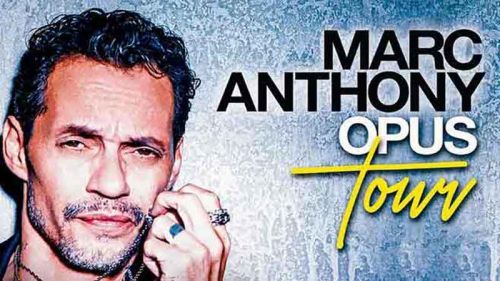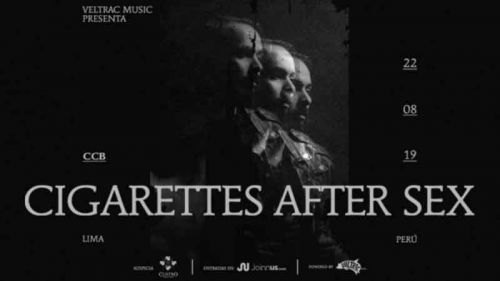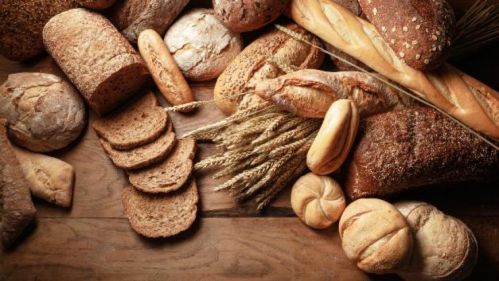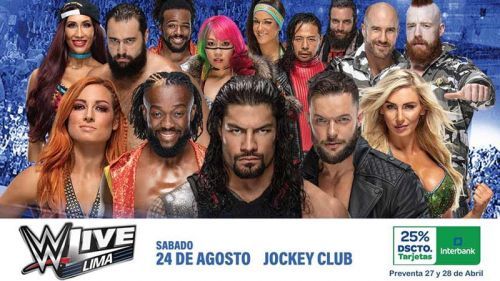The museums "Gold of Peru" and "Weapons of the World" were founded by Miguel Mujica Gallo in 1968. In both museums are more than 25,000 pieces exhibited. Inside the gardens that surround the museums is a boulevard of craft stores, jeweller’s, textile vendors and Peruvian souvenir shops. The Museum "Weapons of the World" exhibits more than 20,000 pieces from all over the world, including various weapons, horse mountings, uniforms, etc.
The showcases of the "Gold Museum of Peru" display the craftsmanship of several centuries of Peruvian history, mainly in pre-Inca gold. There are decorative items of all the cultures, such as, embossed and weaved nose ornaments with cut stone pendants; sets of filigree figures depicting birds, men, or monkeys; mantles, bracelets and earflaps of the Vicus culture; lizards, weasels, felines, bags of coca leaves, earrings and belts of the Frias culture; pectorals with zoomorphic designs, flat or embossed crowns of the Chancay culture; funerary masks with twisted rays or serpents from Ica; and masks with open mouths and teeth, wristbands, shin protectors and spatulas of the Nazca culture.
The ancient Peruvian people worked the metals magnificently. Embossing, lamination, engraving, welding and alloying were the processes used by the Peruvian craftsmen in the 8th Century. The "cire perdue" (lost wax) procedure, known in the East and which had disappeared in the Western World until the Renaissance, was the most popular procedure: it reproduced an object in a semi-solid resin, covering it with a layer of ceramic, similar to that of the "huacos", heating it until the molten resin seeped through the covering, leaving a cast identical to the original object, into which the melted metal was poured. Once the metal had solidified, the covering would be broken.
Weapons Gallery
In ancient times, men exhibited their wealth through their weapons: gold and diamonds, emeralds and opals, rubies and turquoises decorated their swords and sables. The hilts and shield were handcrafted by talented craftsmen, with such art that they conjured fantastic animals and flowers, engraving and sculpturing them on the weapons they manufactured.
From its most distant origins, the sword has been a symbol of authority and leadership; which virtues are manifested in chivalry and courage. The handgun, small cannon, culverin, shotgun, harquebus and the Italian pistols of the mid-14th Century were a considerable modification of the primitive weapons, such as the crossbow.
To tour the Weapons of the World Museum is like going back in time, traveling the world and history: admiring the swords and daggers, uniforms, spears, guns and pistols of different civilizations and changing cultures.
Ceramics Gallery
Visiting the Museums "Gold of Peru" and "Weapons of the World" is a journey through pre-Hispanic time. Besides finding articles of gold, there are a great variety of: fabrics with feathers, glasses, huacos and ceramics that represented the customs of that period. The visitor will find in these museums a wide collection of Peruvian artifacts and exquisite exhibits from around the world.
Textile Gallery
We must give emphasis to the fact that the pieces were collected by a committed Peruvian who dedicated much of his life and fortune in favour of culture.
The Founder of the "Museo Oro del Perú & Armas del Mundo"
Miguel Mujica Gallo, born in Lima , was a distinguished gentleman and a businessman linked to various economic activities in his country. Above all, he was an internationally renowned collector: a cultured man, passionate about the great historical and artistic tradition of Peru . However, his interest and curiosity spread to other nations as well, and to the most remote areas of this country, as evidenced by anyone who visits his extraordinary collection of weapons and firearms: twenty thousand pieces of all the different eras and countries - one of the most remarkable private collections in the world.


